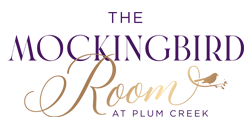Expert Tips for Maximizing Space in Small Event Venues
By some estimates, there are as many as 1.8 million events held per year just in the United States. With so many people holding events, understanding how you can make the most of your event planning is critical.
One of the biggest challenges facing your event planning is the limitation of space. Working with small event venues can feel almost impossible at times, but with some know-how and trial and error, you can make the most of even the smallest space.
If you're set to host an event in a small space, we're here to help. Read on for a full guide on how to handle small event venues.
Using Outdoor Spaces
Let's start with something that sometimes isn't available to us: the outdoors. Depending on where you are, what time of the year it is, and where the event is being held, you may have access to the outdoors.
Outdoor spaces are excellent for making even the smallest venue feel large. Larger spaces allow attendees to wander and roam while still staying nearby, which helps immensely with crowd control.
That said, there are still some risks, and outdoor events aren't inherently better. Here are some tips for how to use the outdoors to your advantage.
Minimal Barriers
One of the main benefits of an outdoor space is the lack of large barriers. The walls of an indoor event can feel constricting, especially when the crowds are growing.
In many cases, you may need to erect some form of barrier. These are often to show where the event is being held, to keep out people who aren't part of the event, and for safety. But in most cases, you'll have some control over what those barriers look like.
A great way to make the barriers feel less restrictive is to identify the borders with planters. These provide a natural decoration to the event while also doing the same job something like a rope or chain may do. They also are great for sticking to your budget.
Another option is to use banners or advertisements, which can feel as much as a part of the event as they could feel like a barrier. A large banner lets attendees know that they're at the limit of the event without feeling like they can't go past it.
Making the Most of the Room
Another great choice is to do what you can to make the most of the space you have available to you. The event space may have specific barriers, but in many cases, you'll have spare room around your borders.
You shouldn't place any features outside of these borders for obvious reasons. Things like refreshments, information kiosks, and anything else need to stay inside of your event's borders.
However, it's common for attendees to stand on the other end of a barrier for light conversation. As a result, they feel like part of the event while technically not being within the boundaries. That also has the added benefit of helping manage crowds.
Placing your features strategically can also help you make the most of your event. Consider placing refreshment stands farther away from each other so that members don't confuse the lines. You should also make sure things like queueing spaces are visibly marked out so queues aren't blurred into the crowds.
The specifics will change heavily depending on the event space you have available to you. When you host an event, do your best to know the event space ahead of time so you can plan out the space effectively.
Assessing Crowds
Crowds are crucial to any event, but with outdoor spaces, they become particularly important to manage. As there are fewer "hard barriers", crowds can easily get out of hand.
One of the most obstructive things for an event is when passersby mix with the crowd. For staff, telling apart who is or isn't a member of the event can cause issues. For attendees, having their event "crashed" by random individuals can lessen the event.
A good way to manage crowds is to ensure you have marked places of entry and exit. You should also have a way for members of your corporate event to show that they belong at the event. A simple badge or nametag is often enough to do so.
Using Indoor Spaces
What if your space has no outdoor areas available? If you have a fully indoor space, you'll have different challenges, though many have similarities. Here are our favorite ways to make the most out of an indoor space.
Minimalist Design
One ideal way to handle an indoor space is to use a minimalist design. Minimalism is a design philosophy based on a sleek, unobtrusive aesthetic. Think "doing a lot with a little."
Minimalism is effective for indoor spaces because it calls for fewer decorations. That means the area feels less "busy," and there are fewer objects that can crowd attendees.
Spacious Areas
A great benefit of minimalism is that it opens up the area to feel spacious. Even a smaller event space can feel larger when there's nothing obstructing the flow of space.
However, this comes with some challenges. If the room is open in this manner, it can feel as if there's no direction.
Make sure you're still making it clear what's in what direction. Clearly mark queues, stands, events, pathways, and anything else that feels important to your design. Leaving these things unmarked can make it feel as if the event is simply a larger, empty room.
Sections and Dividers
One way you can do so is by putting in sections and dividers. Doing so can make an empty room feel more like several smaller rooms.
Think of cubicles but on a larger scale. Having half-walls or flower planters to mark an area will make it feel as if there are dedicated spaces you can go to.
One challenge of this tactic is that it's difficult to balance minimalism and dividing your sections. You should experiment with your layout, the assets at your disposal, and the event space. Small event venues can feel much smaller with too many dividers up, so design carefully!
Enhancing Your Space
Whether you're indoors or outdoors, there are some tips for maximizing your space. Here are some tips to keep in mind for your next corporate event.
Colorful Aesthetics
If a space becomes crowded, it can quickly become less visually appealing. That effect is magnified in a room that's lackluster in design or coloration.
Consider using brighter, more colorful aesthetics. These are mostly at play in decorations.
You also can use color to indicate directions or areas. Directing attendees to an area that's easily identifiable by color is more effective than dull lettering.
Half In, Half Out
If you have an event space that's both indoor and outdoor, you should make sure you're making the most of both spaces. One way you can make your crowd feel less dense is by splitting them between both.
A good way to do so is by having refreshments or other luxuries outside. Afterward, attendees can filter themselves into the event at their leisure. Indoors, you can have all of the "business" offerings.
If you choose to do so, make sure you have a backup plan for any turn in weather. Having half your event suddenly rained out can toss a catastrophic wrench into your event planning.
Plentiful Staff
Another important step is to make sure that attendees never struggle to find someone working at the event. Staff members should be plentiful, stationed throughout the event, and easily identifiable.
As the crowds grow, staff may need to move out of the main area. Have designated places where they can stand so that attendees still have easy access to aid if they need it.
Working In Groups
A good way to keep the crowds thinned is to make sure they're continuously moving. Handling a crowd of 1,000 can cause clogs in service, but handling four crowds of 250 is a much easier task.
Consider giving attendees times to attend, or separate them into groups. That also will help make sure there are no issues with stock, communication, or any other problems dense crowds can cause.
Clear Communication
Finally, no matter where the event is being held, communication is key. Do your best to keep a clear line of communication open to all attendees.
Make sure it's understood when any important events will take place, where they will be, and how best to access the event. Having strong communication can also help your team coordinate and move through the event. Finally, healthy communication can help to handle the crowd in case of any emergency, such as a fire.
Handling Small Event Venues
Small event venues present unique challenges to your event planning, but you shouldn't let them intimidate you. Whether your event space is meant for small events or if you're trying to make do with a smaller-than-expected space, knowing how to handle the space will make your corporate event shine.
At The Mockingbird Room, we're proud to present you with a beautiful and pristine space. Our banquet room can comfortably serve more than 290 guests in a gorgeous, well-managed space. Contact us to discuss your upcoming event today.
By accepting you will be accessing a service provided by a third-party external to https://www.mockingbirdroom.com/



